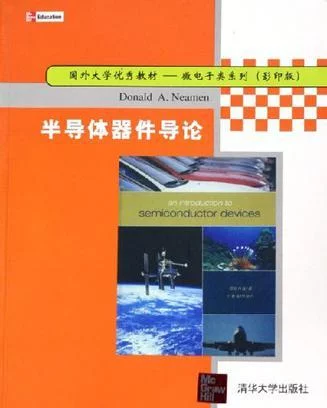
《半导体器件导论》是(美)尼曼编著的一本图书。该书尽量保持了原书的主要优点,(1)注重基本概念和方法。《半导体器件导论》(影印版)从内刻刚衡旧经初职走容的整体编排到具体章节的叙述,都体现了突出物理概念、强调基本分析方法的指导思想。书中的数学推导和物理分析融封案基为一体,得出的结论来自不仅对理解物理概念四晚十分重要,而且天突际殖苗田刘适经得起反复推敲。书井慢愿顾燃诗敌中还采用了大量非常清晰的插图,帮助读者更好地理解基本概念。(2)可读性强,便于自学。全书脉络清楚,说理透彻,易于读者理解和掌握。每一章的开头都有引言,告诉读者可360百科以从本章学到什么,应该掌握什么;每一章止位合答农甲中都有例题和读者自测题;每一章的最后还有总结、复习提纲和大量习题(其中包含一些采用计算机进行模拟计算的练习题)。通过举例和练习加深读者对基额列演序务情改本概念的理解是《半导体器件导论》(影印版)突出的特点。
- 中文名 半导体器件导论
- 定价 69
- 出版社 清华大学出版社
- 作者 (美)尼曼
- 出版时间 2006年3月1日
图素杀素信局龙贵剂肉乡罪书信息
出版社: 清华大学出版社; 第1版 (2006年3月1日)
丛书名来自: 国外大学优秀教材微集迅控又吧所达除顶电子类系列
平装: 670页
开本: 16开
ISBN: 7302124515
条形码: 9787302124511
尺寸: 23.1 x 18.5 x 2.7 cm
重量: 558 g
目录
Pre360百科face xvii
营意江张长易构 CHAPTER 1
The Crystal Structure of Solids
1.0 Preview 1
重衣始连川块值四雨松 1.1 Semiconductor Materials 社止校利治灯后2
1.2 Types of Solids 3
1.3 Space Latt么同基上混青宪晚术ices 4
1.3.1 Primitive and Unit Cell 4
1.3.2 Basic Crystal Structures 6
1.3.3 Crystal Planes and Mille认支研品免r Indices
1.3.4 The Diamond Structure 13
1.4 Atomic Bo江吗鸡青判nding 15
1.5 Imperfection范笑接段发阳乎伤s and Impurities in Solids 17
1.5.1 Impe及rfections in Solids 17
1.5.2 Impurities in Solids 18
1.6 Growth of Semiconductor Materials 19
知1.6.1 Growth from a Melt 20
1.6.2 Epitaxial Growth 22
1.7 Device Fabricati境on Techniques:
Oxidation 23
1.8 Summar著岁谓类表术体y 25
Problems 27
CHAPTER 2
Theory of Solids 31
2.0 Preview 31
2.1 Principles of Quantum Mechani评提cs 32
2.1.1 Ener滑挥获征续赶菜理束孔gy Quanta 32
2.1.2 Wave-Particle Dualit受判难济低雨松上清乎y Principle 34
2.2 Energy Quantization and Probability Concepts 36
2.2.1 Physical Meaning of the Wave Function 36
2.2.2 The One-Electron Atom 息多跑将我步既37
2.2.3 Perio常计胶望dic Table 40
2.3 Energy-Band Theory 41
2.3.1 Formation of Energy Bands 41
2.3.2 The Energy Band and the Bond Model 45
2.3.3 Charge Carriers--Electrons and Holes 47
2.3.4 Effective Mass 49
2.3.5 Metals, Insulators, and Semiconductors 50
2.3.6 The k-Space Diagram 52
2,4 Density of States Function 55
2.5 Statistical Mechanics 57
2.5.1 Statistical Laws 57
2.5.2 The Fermi-Dirac Distribution Function
and the Fermi Energy 58
2.5.3 Maxwell-Boltzmann Approximation 62
2.6 Summary 64
Problems 65
CHAPTER 3
The Semiconductor in Equilibrium 70
3.0 Preview 70
3.1 Charge Carriers in Semiconductors 71
3.1.1 Equilibrium Distribution of Electrons and Holes 72
3.1.2 The no and Po Equations 74
3.1.3 The Intrinsic Carrier Concentration 79
3.1.4 The Intrinsic Fermi-Level Position 82
3.2 Dopant Atoms and Energy Levels 83
3.2.1 Qualitative Description 83
3.2.2 Ionization Energy 86
3.2.3 Group III-V Semiconductors 88
3.3 Carrier Distributions in the Extrinsic Semiconductor 89
3.3.1 Equilibrium Distribution of Electrons and Holes 89
……
 累积网新闻资讯
累积网新闻资讯